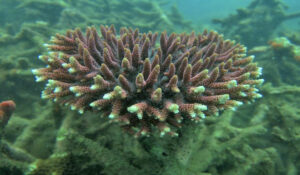
In general, salt is produced from the seawater distillation process. But not in Papua. Indigenous peoples who live far from the coastal areas have their own way of meeting the needs of this staple food. The salt they use is produced in a more exotic way. More or less three types of native Papuan salt and has been widely developed.
One of the three native Papuan salts is ash salt, commonly used as a flavoring ingredient. Local communities around the Baliem Valley, Papua Mountains Province at an altitude of 1,800-3,000 meters above sea level, use the saltwater pools at Jiwika and Hetegima as a source of salt. Apart from the Baliem Valley, several other tribes in the western mountainous region of Papua also rely on and maintain the Hitadipa, Homeyo, and Wandai saltwater pools as sources of their salt.
Read also: Areca Nuts, Potential Local Commodity
Utilization of this salt source is unique, especially its production process. Mostly in the West Mountains region, the production of this salt is carried out by men, but in the Baliem Valley, the production process is only conducted by women.
In addition to producing salt, saltwater ponds are also used to preserve food, similar to what people in Sarmi District do. Here, the saltwater pool is used to preserve food from hunting such as cassowary and pork. Animals caught during the hunting will be cleaned, then soaked in a pond and left for a certain period of time.
Indigenous knowledge possessed by the people of Tanah Papua is indeed very rich, this is proven by the skills of the Korowai indigenous people who can make salt from the leaves that grow wild in the forest. This leaves salt also one of the native Papuan salt. The leaves used are “and” leaves. The manufacturing process itself is somewhat unique. The leaves will be collected and woven, then burned over coals into charcoal, then wrapped using palm leaves. These leaves are used as salt and often used as a cough medicine.
Baca juga: Deer, Income Potential and Pest at Guriasa Village
The other native Papuan salt is made from tree fronds. The fronds they use are nipa fronds, a type of tree found in the mangrove ecosystem, which the people of Manado, Ternate, and Tidore commonly call bobo plants. Usually, this plant grows in brackish water, which is located in between seawater and river water. Only the core of these fronds will be taken. This midrib salt is widely used by the Iwaru Tribe, which is located in South Sorong.
Chef Charles Toto from Jayapura thought these fronds salt should have its own patent due to its fairly high selling value. “Don’t let people claim it and copy what we find,” said the chef who is popularly called the Papua Jungle Chef because of his hobby, who likes to cook in the forest made with various food sources collected from the surrounding forests.
However, pioneer flights to the interior affected the influx of modern salt along with other logistics. Displacing traditional salt from the daily life of the people in the Land of Papua. Besides being considered much more practical, modern salt also has a higher level of iodine. The production and use of traditional salt are only carried out by the older generation, even though this is one of the original cultural assets of the Land of Papua that we must protect.
Editor: Nur Arinta and Swinny Adestika




